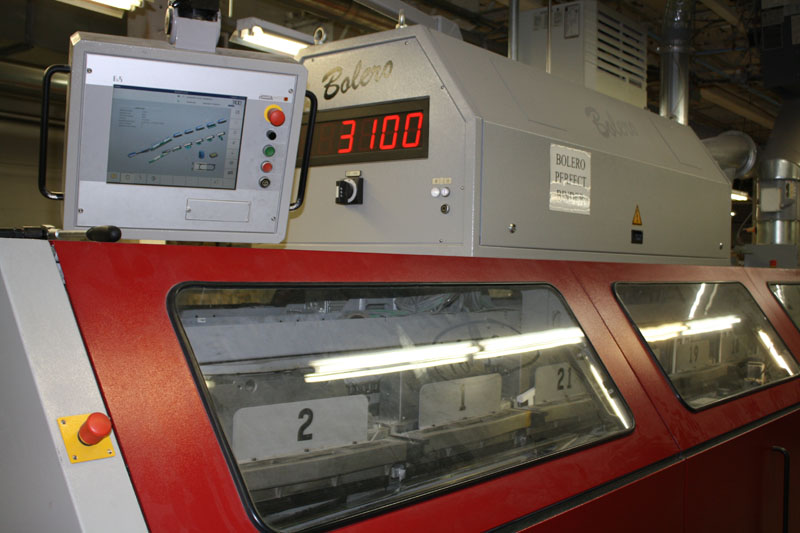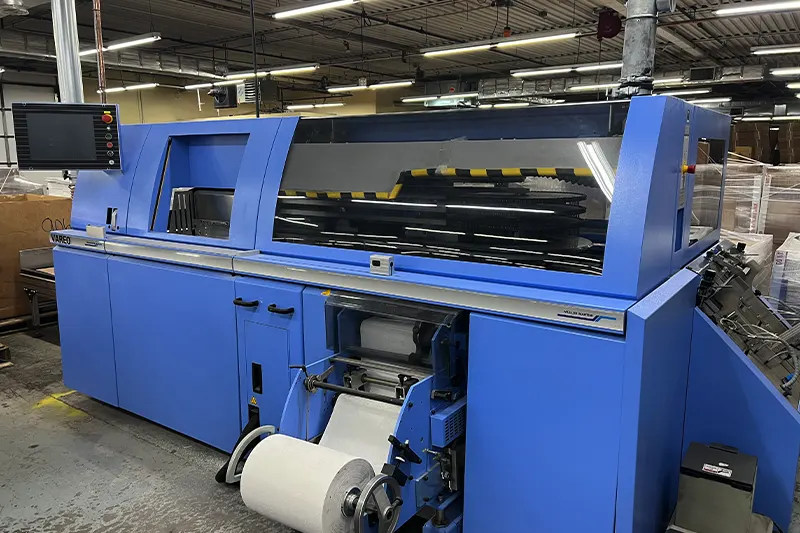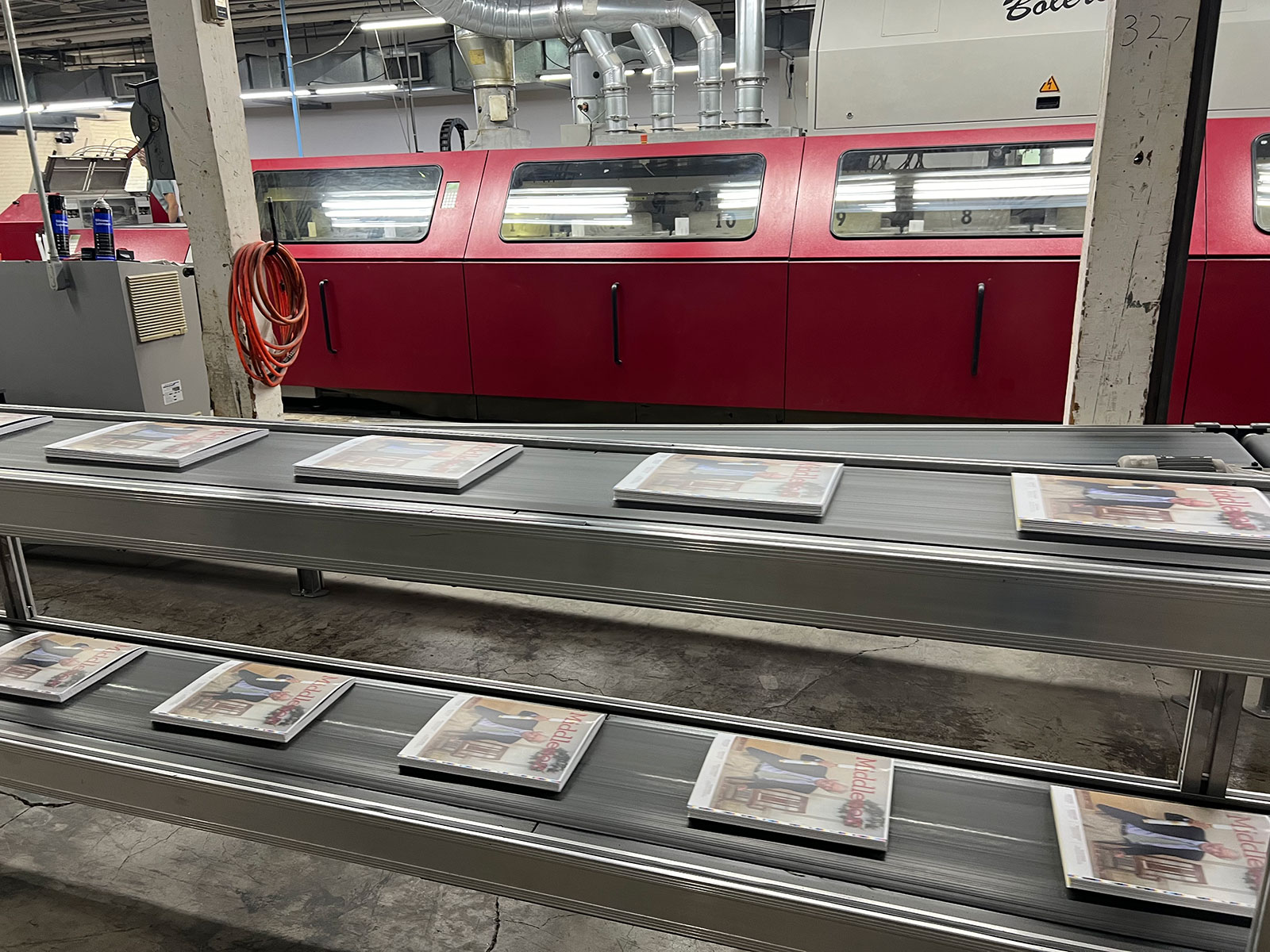Perfect Binding
 The Perfect Binding method is utilized on a variety of printing projects because of its professional appearance and relatively low cost. It is commonly used for annual reports, manuals, catalogs, fiction and non-fiction books and thicker product brochures.
The Perfect Binding method is utilized on a variety of printing projects because of its professional appearance and relatively low cost. It is commonly used for annual reports, manuals, catalogs, fiction and non-fiction books and thicker product brochures.
Our Muller Martini Bolero Perfect Binder has capabilities including:
 18 pocket
18 pocket- 8,000 per hour
- PUR & EVA adhesive options
- Cover feeder
- In-line trimmer
- Three station spine preparation
- 2 hand feed sections for additional signatures and pre-collated sets
- Signature recognition
Our Muller Martini Vareo Perfect Binder has capabilities including:

- 3 clamps
- Mechanical 1350 cycles/hour
- PUR Adhesive
- Minimum block size: 4 1/8” x 4 1/8”
- Maximum block size: 13” x 14 3/16”
Our Tapester The EZ Spine Taper machine has capabilities including:
- Up to 1,000 pads per hour
- Applies tape to product from 1/8”-2 ½” thick and 3”-22” long
- Uses cloth or paper tapes from 1/2″ to 3″ widths, and up to 10″ diameter rolls
About Perfect Bound Books
Perfect Bound books have a square, printed spine and the cover is usually made from paper or cardstock that is heavier than the interior pages. In addition, the cover is often clear-coated to provide durability and improve appearance. The square spinal edge formed by the perfect binding methods allows for the book’s title or other information to be printed on the spine, which is something that saddle stitch and spiral binding methods can’t offer.
The Perfect Binding Process
 The binder operator first stacks the interior pages together to form a crisp block.
The binder operator first stacks the interior pages together to form a crisp block.- Then, the spine of this block is roughed up with blades or abrasives. This exposes more paper fibers and increases the bonding area for the glue.
- Hot glue is then applied along the roughed-up edge of the interior page block.
- The cover of the book is then wrapped around the block of pages and it adheres to the glue along the spine.
- After the glue has cured, the three open edges of the book are trimmed accordingly to give them nice clean edges.
PUR vs. EVA Adhesive for Perfect Binding
Polyurethane Reactive (PUR) is an adhesive used in book binding as an alternative to the traditional Hot Melt adhesive, commonly known as EVA or Ethylene Vinyl Acetate. PUR is the most durable and flexible book binding glue available. PUR will enhance the performance of any book by giving it greater strength. Because of its superior performance it is now being used more than the traditional EVA adhesive. Its exceptional qualities include:
- Physical flexibility: Prevents spine cracking and page pulls.
- Lay-flat properties: Allows the book to lay flat when open without having to be held.
- Maintains integrity in extreme temperatures: Over 200° Fahrenheit or -40° Fahrenheit.
- Superior backbone: Binding cross-grained paper with traditional EVA adhesive causes wrinkling in the book’s gutter area. However, because PUR can withstand a lower operating temperature the paper moisture remains in the backbone and as the PUR cures, the paper fibers are able to return to their original orientation. In addition, PUR does not require as much glue, allowing for a nice, square backbone.
- Strength & pliability: Best suited for books created for children, books requiring frequent use, books with pages that have a glossy finish, and books that have few pages.
